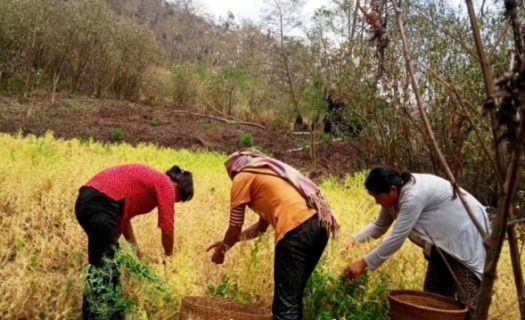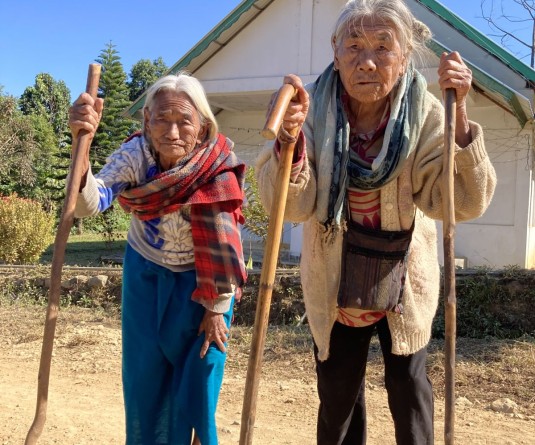Harvesting of field pea

Hannah Krujia Asangla
CTO – Agronomy, KVK Phek
Rabi farming is a remunerative and sustainable farming during the winter season. However, the farmers seldom cultivate during the Rabi season due to the prevailing dry season. Generally, most of the farmers in the village follow mono-cropping system of rice
cultivation. Instead of taking up any second crop after Kharif rice, the farmers of this village keep their rice field fallow during Rabi season owing to release of excess moisture through seepage from surrounding hillocks immediately after rice followed by long dry spell during November-March, lack of irrigation facilities, high run-off water loss and moisture stress etc. However, with the increased demand for food grains, some farmers cultivate field pea, cole crops and mustard, Toria etc during the Rabi season which is very negligible. After the harvest of paddy, the paddy field soils are still damp and usually highly fertile hence, instead of just leaving the fields fallow during the rabi season, the farmers can use the moisture left in the soil to grow field pea. In general, pulses, or legumes are known to have deep roots and can be grown without irrigation. Field pea is an important pulse crop that contains a good amount of digestive protein (22.5%), carbohydrate (61.1%), fat (1.8%) minerals (calcium and iron) and vitamins (riboflavin, thiamine). Cultivation of field pea after rice provides better crop rotation and cropping intensity is enhanced which utilizes all the natural resources available. Therefore, the productivity of field pea can be improved by adopting the improved production techniques.

Mulching with locally available material
The farmers of Gidemi village, Phek District, Nagaland, approached KVK-Phek for improved package and practices on Rabi seasoned crop cultivation. Capacity building programme on recommended package and practices on field pea, hands on demonstrations in farmer’s field, diagnostic visits, field days etc. were conducted for improving the pea production during Rabi season. Improved seeds of field pea viz., Aman, Rachna and Prakash varieties were distributed to the farmers for higher production and economic returns
Production in field pea during Rabi season was successfully introduced and adopted as a viable and sustainable economic activity in Gidemi Village. The average income of the farmers increased during the process due to adoption of improved technology on package practices. The annual income of the farmers was Rs. 23843.33 from hectare area of field pea production before the intervention of the technology. However, with the interventions like soil moisture conservation through locally available mulch materials, Zero till method and use of improved varieties, etc., the farmers could achieve an annual income of Rs. 46096.66 from hectare area. Since the intervention of the technology, approximately 40% of the farmers were involved in horizontal spread through farmer-farmer approach which resulted in expansion of area under field pea cultivation.





